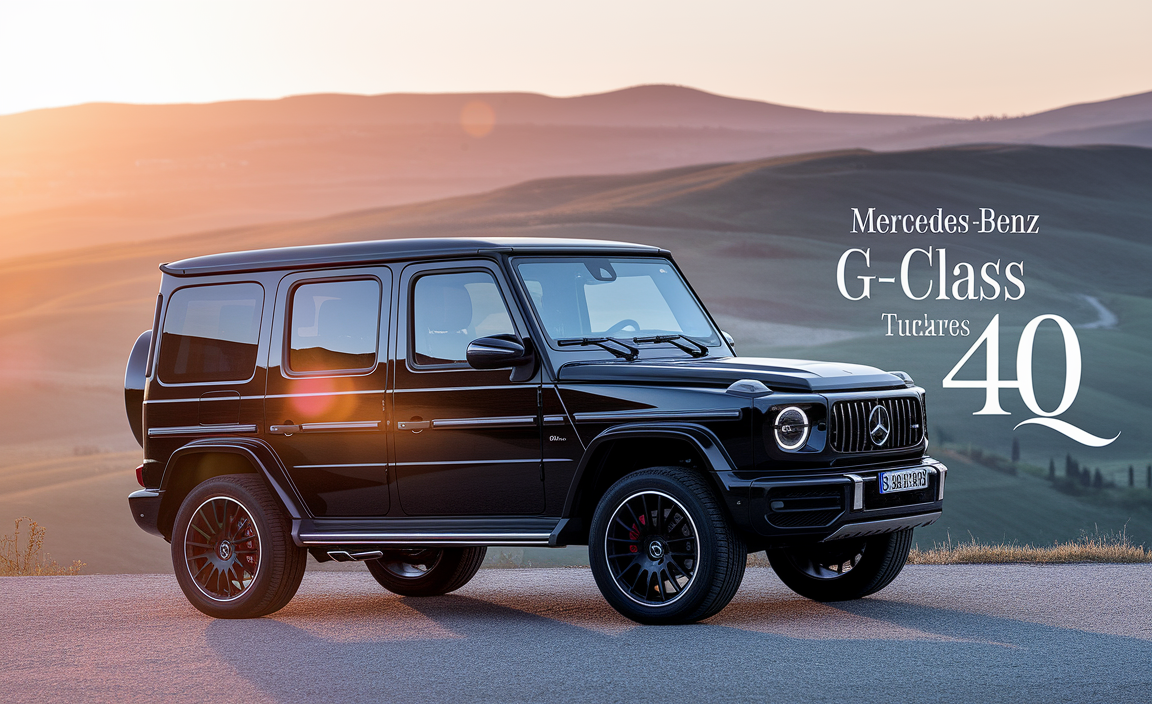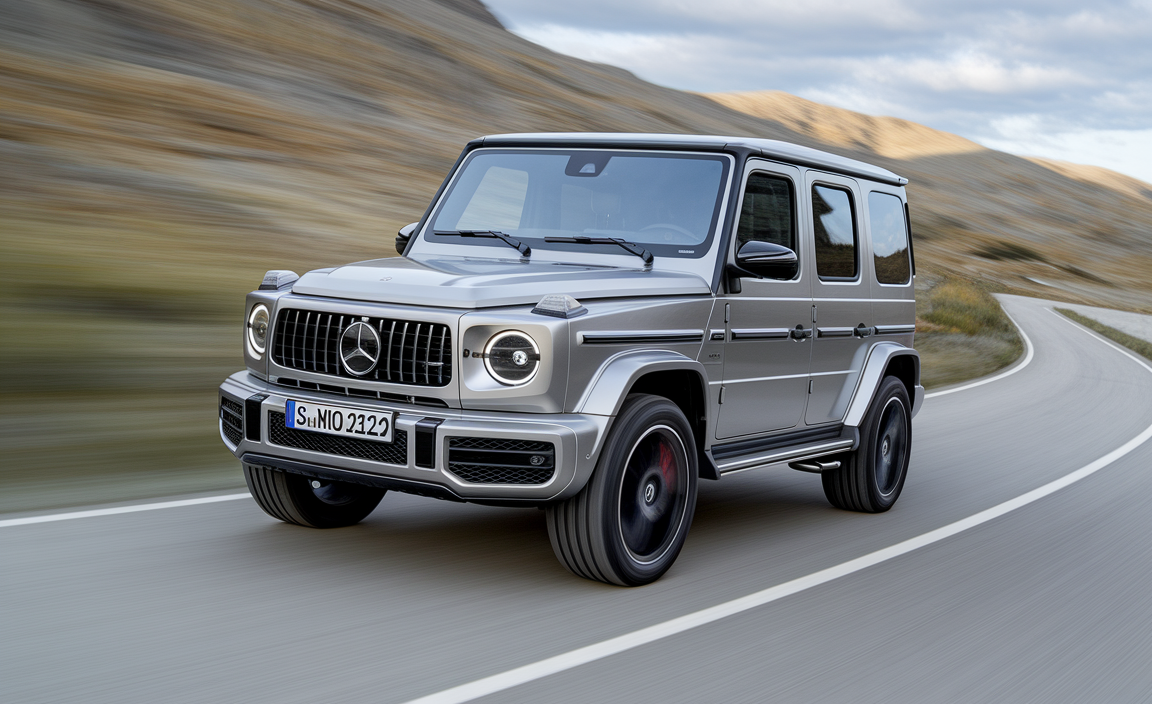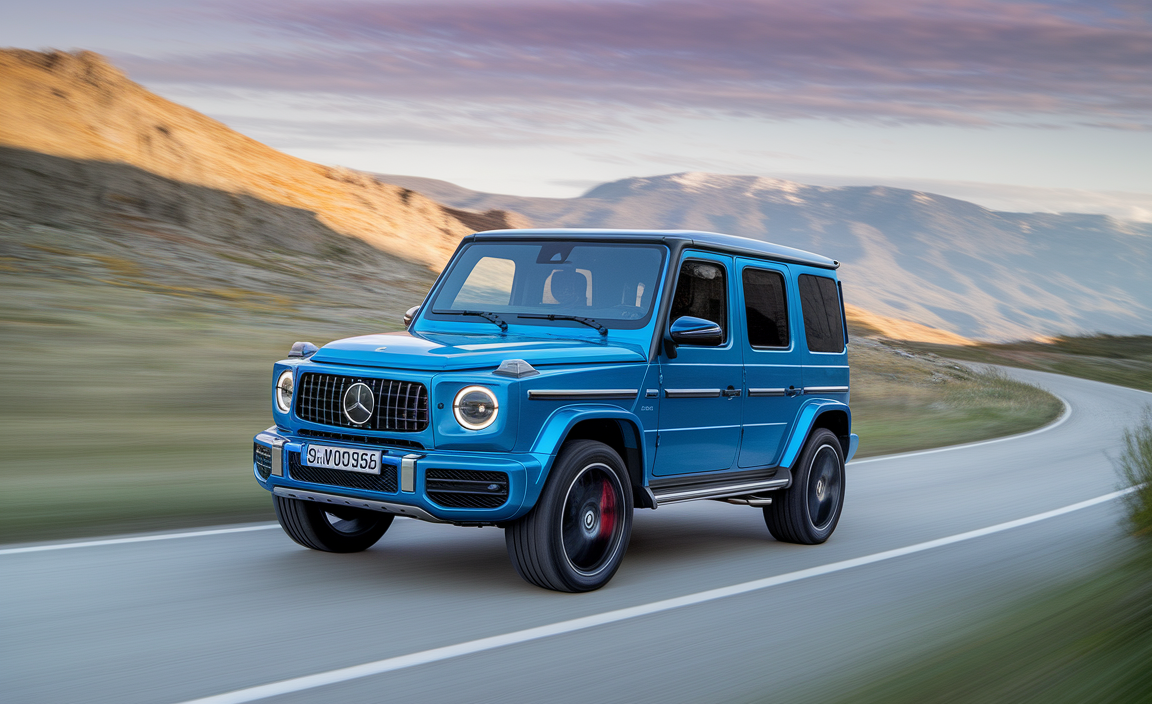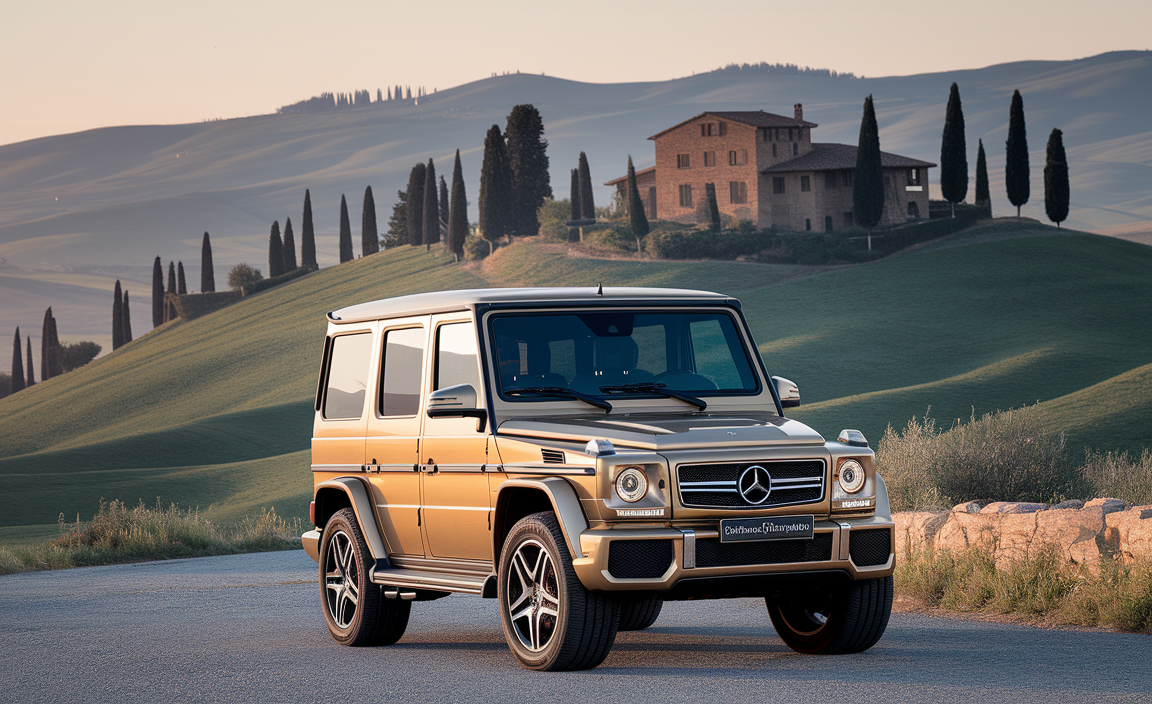Happy anniversary to the boxy brute that stole our hearts — the Mercedes-Benz G-Class just turned 40. Think about that. Four decades of roaring engines, rigid lines, and off-road dominance. Whether you call it the G-Wagon, G-Class, or just “the G,” it’s more than just a luxury SUV — it’s a cultural icon. From military roots to red carpets, this beast has done it all. And we’re here to celebrate it.

This isn’t just a birthday bash. It’s a deep dive into how a rugged off-roader grew into one of the most sought-after luxury vehicles in the world. So grab your seatbelt — this ride through history is worth every second.
Origins Of The G-Class

Initial Concept And Purpose
The G-Class story began in the early 1970s, born out of practicality rather than prestige. Commissioned by Daimler-Benz AG and built in partnership with Steyr-Daimler-Puch AG, the vehicle was meant for military use. The boxy shape? That wasn’t for style — it was engineered to tackle impossible terrain with no space for hesitation.
They started with a wooden model, literally. Prototypes tested in rough terrain from the Sahara to the Arctic circle. It was clear — this thing was built to survive.
The First Model Release
In 1979, the first Mercedes-Benz G-Class, also known as the 460-model series G-model, finally saw the light of day. Offered in both short and long-wheelbase versions, it came with options for hard tops, soft tops, and station wagons. Think: no frills, but full functionality.
The first models didn’t scream luxury. The standard equipment was barebones — vinyl seats, manual transmission, and zero tech gimmicks. But it had what mattered: a ladder frame, locking differentials, and true on-demand all-wheel drive system.
Evolution Over Four Decades

Key Design Milestones
Despite its utilitarian start, the G-Class evolved steadily. In 1990, the 500 GE V8 brought serious power to the mix. By the late ‘90s, design touches like leather interiors and wood trims were becoming the norm.
Design remained boxy — those straight lines and flat boot lid are now signature features. Credit where it’s due: Bruno Sacco, the design chief behind many Mercedes classics, ensured the G maintained its rugged charm.
Technological Advancements
Tech-wise, it’s been a leap. ABS anti-lock braking system became standard. Power steering? Yes — the later models could fit power steering without sacrificing control. More recently, modern steering systems and driver assists joined the club, without dulling its raw feel.
Model Variations And Special Editions
Over the years, the G-Class family grew — and weirdly, got cooler. The AMG Compressor models pushed performance boundaries. Then came collector candy like the Mercedes-Maybach G 650 Landaulet, a convertible limo-style monster with V12 growl.
Let’s not forget the professional variants, built for fire brigades, military, and safari expeditions. And yes, there’s even the Mercedes-Benz Kitchener-Waterloo limited series in Canada — because the G doesn’t follow borders.
Legendary Status In Automotive Culture

Iconic Features And Craftsmanship
The G-Class is handcrafted in Graz, Austria. That means it’s not just assembled — it’s born. Built with precision, the G-Class doesn’t pretend to be tough. It is tough. And beneath the luxury, there’s still a chassis meant for battlefields.
With those differential locks, it’ll climb hills you wouldn’t dare walk up. The road capability is nothing short of brilliant — both on and off the tarmac.
G-Class In Popular Media
The G-Wagon’s pop culture presence is insane. From Toto Wolff’s garage to countless rap videos and Hollywood cameos, it screams “I’ve arrived.” Even bizarre models like the mysterious Mercedes-Benz 800 SEL and the bizarre Mercedes-Benz S-Class nod to the G’s cultural dominance.
It’s the go-to for athletes, royalty, and rebels. From the dirt to the catwalk, the G is always in style.
Enthusiast Communities And Clubs
There’s a special family of G-Wagon lovers out there — from online clubs to off-road meetups. These folks aren’t just fans; they’re evangelists. Whether restoring old models or modding them for overlanding, the G community is as tough and loyal as the SUV itself.
Engineering Excellence

Innovation In Performance And Safety
From the beginning, performance was priority. Today’s G 400 d or AMG G 63 models offer massive torque, flawless on-demand all-wheel drive systems, and high-speed comfort. Even with luxury trappings, it’s still engineered for rough play.
Safety? Always improving. Multiple airbags, driver assists, and rugged structure make it as secure as it is fierce.
Durable Design And Longevity
These machines don’t die easily. Some have run hundreds of thousands of miles — through deserts, snowfields, and jungles. The secret? That indestructible frame and Mercedes engineering discipline. It’s not rare to see 30-year-old Gs still pulling daily duty.
Off-Road Capabilities
The G-Class was born off-road. Its ground clearance, water-fording ability, and triple differential locks mean it can go where few luxury SUVs dare. Whether in sand dunes or snowy trails, this beast handles it all with swagger.
The on-demand all-wheel drive system makes transitions seamless. It’s a rare combo — comfort and chaos, wrapped in one.
Perspectives On Design And Performance

Critiques And Challenges
Not all feedback has been glowing. Critics point to fuel economy and parking woes. And yes, adapting such a classic design to meet modern emissions and pedestrian safety standards hasn’t been easy.
Yet Mercedes somehow keeps the magic alive while updating the essentials.
Adaptations To Modern Demands
Hybrids? EVs? You bet they’re coming. Mercedes is reportedly working on an electric G-Class. Same badass look, zero emissions. A bold move — but necessary.
They’ve also improved interiors with plush tech, upgraded suspension, and climate control that rivals the Mercedes-Benz S.
Future Design Considerations
What’s next? Think smarter builds, lighter materials, maybe even modular designs. But the core philosophy will stay. The G isn’t just a car — it’s a statement. The next versions will preserve that, no doubt.
Impact On The Mercedes-Benz Brand
Contribution To Mercedes’s Luxury Image
Let’s face it — the G-Class elevated Mercedes’s cool factor. It brought street cred. It’s one of the few luxury models with real-world grit and glamorous flair.
From Daimler-Benz AG to today’s Mercedes-Benz empire, the G played a vital role. It’s more than a vehicle; it’s a bridge between heritage and innovation.
Influence On Other Models
The G’s influence extends far. You’ll find hints of its rugged DNA in crossovers and SUVs across Mercedes’s lineup. The spirit of the G lives in vehicles like the GLB, GLC, and even sprinkles of it in the Mercedes-Benz S-Class — albeit refined.
And the idea of pushing limits — that’s pure G-Class inspiration.
Conclusion
Forty years ago, nobody expected a rugged utility truck to become a global status symbol. Yet here we are. The Mercedes-Benz G-Class has stood the test of time — not just by surviving, but by thriving.
It started as a military mule and morphed into a street legend. And even as the world shifts toward cleaner, sleeker transport, the G stays relevant. It’s both a time capsule and a trailblazer. So, happy anniversary to the G-Class. May your straight lines never fade and your off-road spirit never soften.
FAQs
Why Was The Mercedes-Benz G-Class Originally Created?
It was first designed in 1979 for military use by Daimler-Benz and Steyr-Daimler-Puch AG. The goal was to create a durable, globally capable 4×4 vehicle with superior road capability and off-road performance.
How Has The G-Class Evolved Over 40 Years?
From a rugged utility vehicle to a luxury icon. Over time, it gained differential locks, ABS anti-lock braking system, fit power steering, AMG Compressor models, and plush interior upgrades that rival the Mercedes-Benz S-Class.
What Is The Most Luxurious Version Of The G-Class?
The Mercedes-Maybach G 650 Landaulet. It’s ultra-rare, open-top, and features a V12 engine. Built in small-series production, it’s the most extravagant G-Wagon ever made.
Who Designed The Original G-Class?
The initial form came from Steyr-Daimler-Puch, but it was refined for civilian life by legendary Mercedes designer Bruno Sacco. His straight-line aesthetic helped make it instantly recognizable.
Why Is The G-Class Called A ‘G-Wagon’?
“G” stands for “Geländewagen,” which is German for “cross-country vehicle.” The nickname “G-Wagon” stuck globally due to its off-road legacy and cult status.
What Are Some Famous Variants Of The G-Class?
The 460-model series G-model, the Mercedes-Benz 500 GE V8, and modern AMG versions like the AMG G63 are standouts. Each brought a new level of performance or luxury.
Is The G-Class Still Good Off-Road Today?
Absolutely. With its on-demand all-wheel drive system, triple differential locks, and rugged ladder frame, it remains one of the most capable off-roaders on the market.
Has The G-Class Appeared In Pop Culture?
Yes, often. From rap videos to movies, the G-Wagon symbolizes wealth and power. Even Toto Wolff, Mercedes-AMG F1 boss, is known to drive one.
What Is The Legacy Of The G-Class In The Mercedes Lineup?
It helped define the Mercedes-Benz luxury image with rugged charm. It also influenced design touches in other models—some even compare it to the mysterious Mercedes-Benz 800 SEL or the bizarre Mercedes-Benz S-Class concept cars.